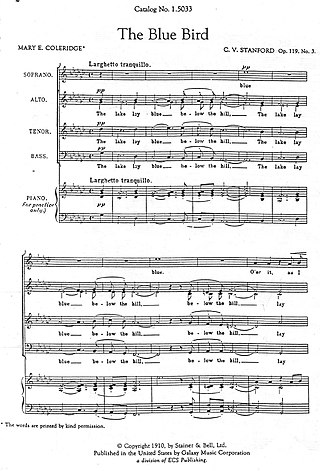Related Research Articles
In musical terminology, tempo, also known as beats per minute, is the speed or pace of a given composition. In classical music, tempo is typically indicated with an instruction at the start of a piece and is usually measured in beats per minute (BPM). In modern classical compositions, a "metronome mark" in beats per minute may supplement or replace the normal tempo marking, while in modern genres like electronic dance music, tempo will typically simply be stated in BPM.

Bebop or bop is a style of jazz developed in the early to mid-1940s in the United States. The style features compositions characterized by a fast tempo, complex chord progressions with rapid chord changes and numerous changes of key, instrumental virtuosity, and improvisation based on a combination of harmonic structure, the use of scales and occasional references to the melody.

Olivier Eugène Prosper Charles Messiaen was a French composer, organist, and ornithologist. One of the major composers of the 20th century, he was also an outstanding teacher of composition and musical analysis.

Rhapsody in Blue is a 1924 musical composition for solo piano and jazz band, which combines elements of classical music with jazz-influenced effects. Commissioned by bandleader Paul Whiteman and written by George Gershwin, the work premiered in a concert titled "An Experiment in Modern Music" on February 12, 1924, in Aeolian Hall, New York City. Whiteman's band performed the rhapsody with Gershwin playing the piano. Whiteman's arranger Ferde Grofé orchestrated the rhapsody several times including the 1924 original scoring, the 1926 pit orchestra scoring, and the 1942 symphonic scoring.

Paul Frederic Bowles was an American expatriate composer, author, and translator. He became associated with the Moroccan city of Tangier, where he settled in 1947 and lived for 52 years to the end of his life.
The Desert Music is a work of music for voices and orchestra composed by the minimalist composer Steve Reich. It is based on texts by William Carlos Williams and takes its title from the poetry anthology The Desert Music and Other Poems. The composition consists of five movements, with a duration of about 46 minutes. In both its arrangement of thematic material and use of tempi, the piece is in a characteristic arch form (ABCBA). The piece was composed in 1983 and had its world premiere on 17 March 1984 in Cologne, Germany.
In music, quartal harmony is the building of harmonic structures built from the intervals of the perfect fourth, the augmented fourth and the diminished fourth. For instance, a three-note quartal chord on C can be built by stacking perfect fourths, C–F–B♭.

Prélude à l'après-midi d'un faune, known in English as Prelude to the Afternoon of a Faun, is a symphonic poem for orchestra by Claude Debussy, approximately 10 minutes in duration. It was composed in 1894 and first performed in Paris on 22 December 1894, conducted by Gustave Doret. The flute solo was played by Georges Barrère.

Sir John Blackwood McEwen was a Scottish classical composer and educator. He was professor of harmony and composition at the Royal Academy of Music, London, from 1898 to 1924, and principal from 1924 to 1936. He was a prolific composer, but made few efforts to bring his music to the notice of the general public.
A ballade refers to a one-movement instrumental piece with lyrical and dramatic narrative qualities reminiscent of such a song setting, especially a piano ballade.

Frederick Jacobi was a Jewish-American composer and teacher. His works include symphonies, concerti, chamber music, works for solo piano and for solo organ, lieder, and one opera.
The '50s progression is a chord progression and turnaround used in Western popular music. The progression, represented in Roman numeral analysis, is I–vi–IV–V. For example, in C major: C–Am–F–G. As the name implies, it was common in the 1950s and early 1960s and is particularly associated with doo-wop. The first popular song to use the progression was "Blue Moon", written in 1934. This inspired "Heart and Soul" in 1938.
Excursions, Op. 20, is the first published solo piano piece by Samuel Barber. Barber himself explains:
These are ‘Excursions’ in small classical forms into regional American idioms. Their rhythmic characteristics, as well as their source in folk material and their scoring, reminiscent of local instruments are easily recognized.
The term Romani style refers to the way Eastern European music is played in coffeehouses and restaurants, at parties, and sometimes on-stage in European cities. Music played in this style differs from actual Romani music played by Romani and Sinti people, many of whom regard the term "gypsy" as a slur when applied to their community.

Ariettes oubliées is a song cycle for voice and piano, L. 60 by Claude Debussy, based on poems by Paul Verlaine. The work consists of six pieces, with an approximate run time of sixteen minutes.
Russell Peck was an American composer born in Detroit on January 25, 1945 to Thorland (Tom) and Margaret (Carlson) Peck. He died in Greensboro, North Carolina on March 1, 2009, at the age of 64.

"Erlkönig", Op. 1, D 328, is a Lied composed by Franz Schubert in 1815, which sets Johann Wolfgang von Goethe's poem of the same name. The singer takes the role of four characters — the narrator, a father, his small son, and the titular "Erlking", a supernatural creature who pursues the boy — each of whom exhibit different tessitura, harmonic and rhythmic characteristics. A technically challenging piece for both performers and accompanists, "Erlkönig" has been popular and acclaimed since its premiere in 1821, and has been described as one of the "commanding compositions of the century".

The Blue Bird is a partsong composed by Charles Villiers Stanford in 1910. It is set to the words of L'Oiseau Bleu, a poem by Mary Elizabeth Coleridge, which depicts a bluebird in flight over a lake. It is written for SAATB choir: soprano, divided altos, tenor and bass. "The Blue Bird" is the third of Stanford's Eight Part Songs which are all settings of texts by Coleridge. It was widely performed by choral societies in England during Stanford's life and is considered one of the best English partsongs ever written. It has been recorded by ensembles including The Cambridge Singers, Oxford Camerata, Tenebrae, and the Gabrieli Consort.
References
- ↑ Paul Bowles (1984). Selected Songs. Soundings Press. ISBN 978-9991022567.
- ↑ Williams, Tennessee (1964). In the winter of cities: poems (9th ed.). New York: New Directions. ISBN 0811202224.
- ↑ Poxon, Stephanie. "Blue Mountain Ballads". Song of America. Retrieved 31 October 2024.